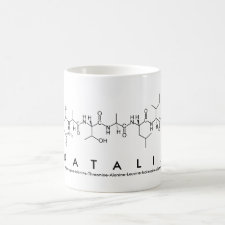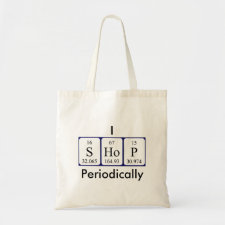
Authors: Denderz N, Lehotay J
Article Title: Application of the van't Hoff dependences in the characterization of molecularly imprinted polymers for some phenolic acids.
Publication date: 2012
Journal: Journal of Chromatography A
Volume: 1268
Page numbers: 44-52.
DOI: 10.1016/j.chroma.2012.10.025
Alternative URL: http://www.sciencedirect.com/science/article/pii/S0021967312015804
Abstract: Thermodynamic analysis was used to quantify the contribution of entropic and enthalpic terms of the binding processes of selected phenolic acids (PAs), quercetin and diperodon on series of molecularly imprinted polymers (MIPs). All polymers were prepared using acrylamide as functional monomer and acetonitrile as a porogen. The following PAs were used as templates - gallic (GA), gentisic (GeA), syringic (SyrA), protocatechuic (PCA), 4-hydroxybenzoic (pHBA) and vanillic (VA). The assessment was based on quantification by HPLC measurement of the analytes tested at temperature range from 20 °C to 50 °C in two mobile phases - methanol and porogen. There were determined van't Hoff curves - dependences between logarithms of the retention factors (ln k) and the inverse value of the temperature (1/T). All plots fall along straight lines, what suggests that there were no changes in the sorption mechanisms over the studied temperature range. Determined thermodynamic parameters helped to specify the nature of molecular recognition on the PAs-MIPs. We found that preferred eluent for analytes sorption on the PAs-MIPs and the NIP was porogen. When methanol as the mobile phase was used there was not documented sorption of the investigated compounds on the NIP. Calculated imprinting factors (IFs) in porogen were highest in the dominant advantage of template molecules used, what confirmed a good molecular imprinting effect. The IF values for PAs studied were as follows: GA = 21.98 ± 2.62, PCA = 6.07 ± 0.13, pHBA = 3.58 ± 0.25, SyrA = 2.80 ± 0.17, GeA = 2.37 ± 0.34 and VA = 2.07 ± 0.10. The results of thermodynamic studies demonstrated that enthalpic term was the dominating driving force for the predominant part of investigated analytes. The exceptions were: SyrA on the NIP and on the GA-MIP, diperodon on the PCA-MIP in acetonitrile and quercetin on the GA-MIP in methanol where a favourable driving force was to be found an entropic term. The PAs-MIPs and NIP were also characterized by attenuated total reflectance analysis Fourier transform infrared spectroscopy (ATR-FTIR) and scanning electron microscopy (SEM)
Template and target information: gallic acid, GA, gentisic acid, GeA, syringic acid, SyrA, protocatechuic acid, PCA, 4-hydroxybenzoic acid, pHBA, vanillic acid, VA, quercetin, diperodon
Author keywords: molecularly imprinted polymer, Thermodynamic analysis, Phenolic acids, Attenuated total reflectance analysis Fourier transform infrared spectroscopy, scanning electron microscopy
![]()


Join the Society for Molecular Imprinting

New items RSS feed
Sign-up for e-mail updates:
Choose between receiving an occasional newsletter or more frequent e-mail alerts.
Click here to go to the sign-up page.
Is your name elemental or peptidic? Enter your name and find out by clicking either of the buttons below!
Other products you may like:
 MIPdatabase
MIPdatabase









